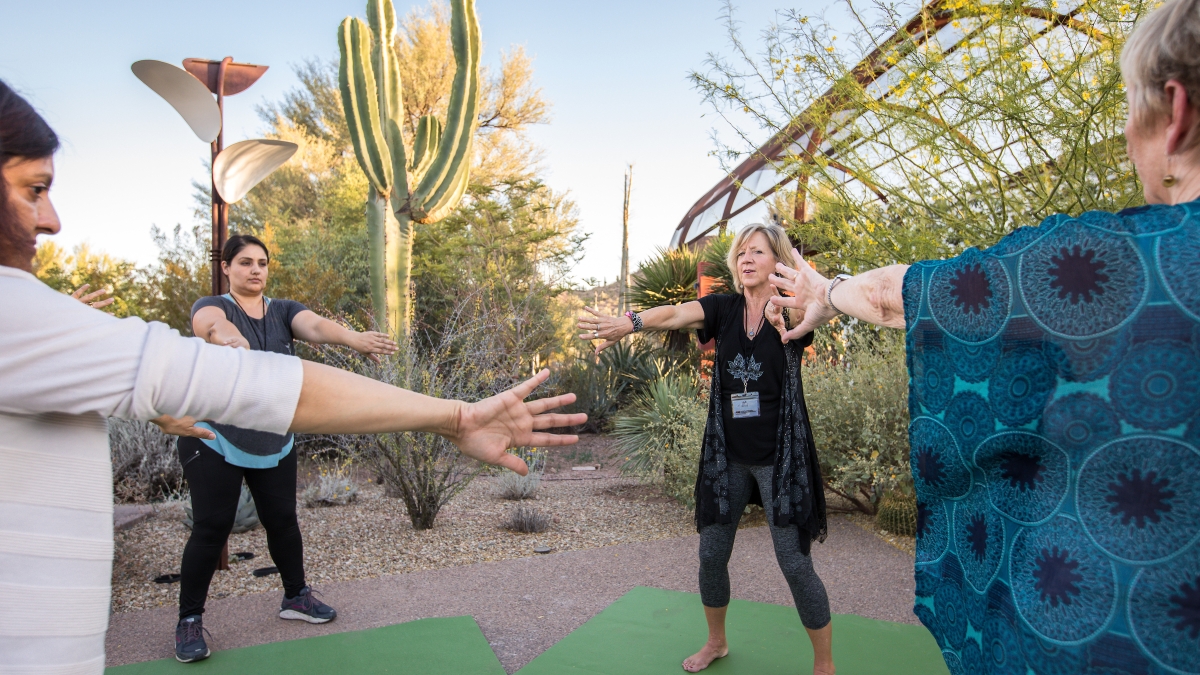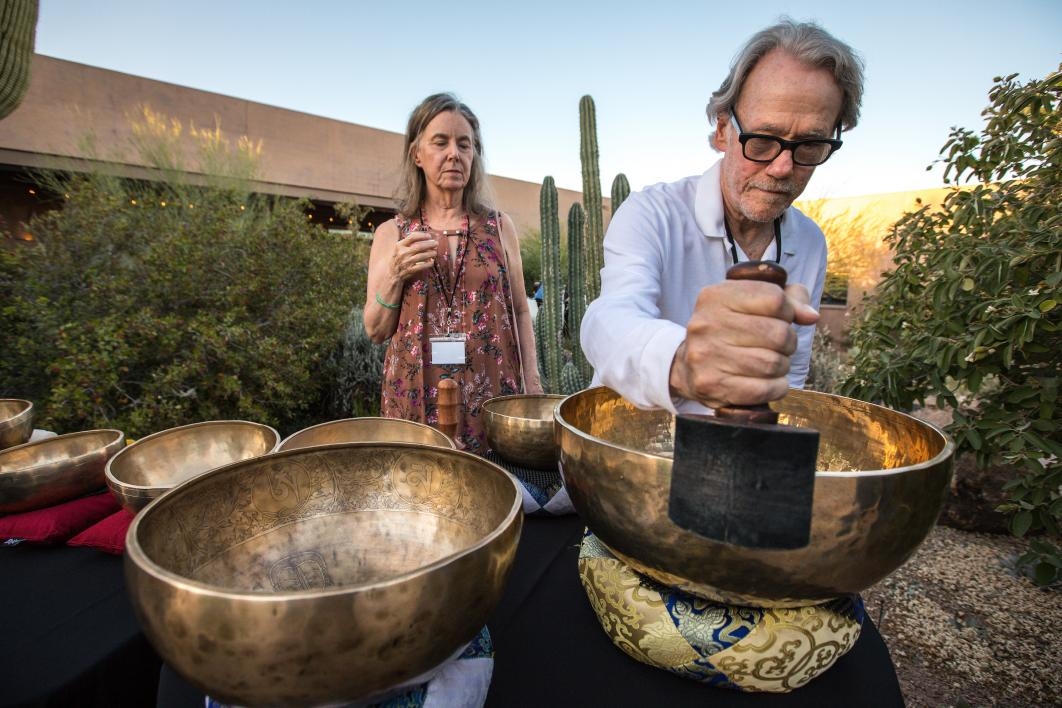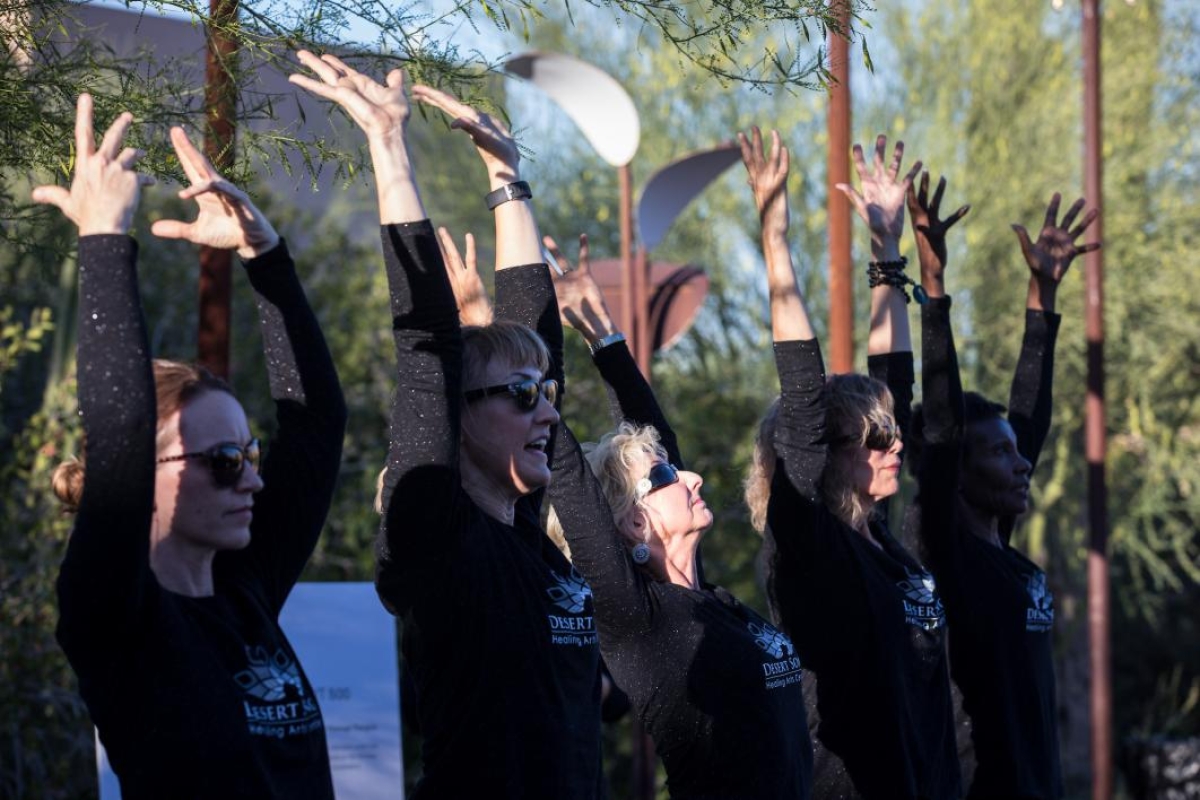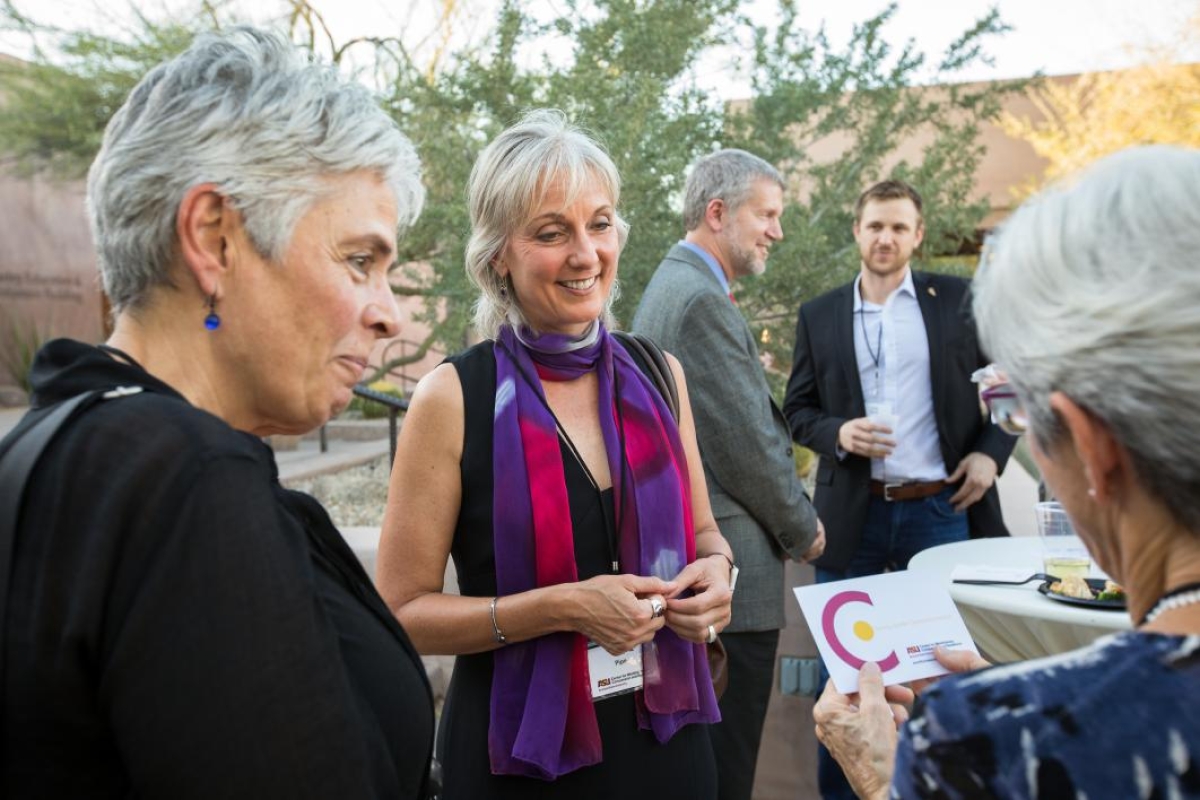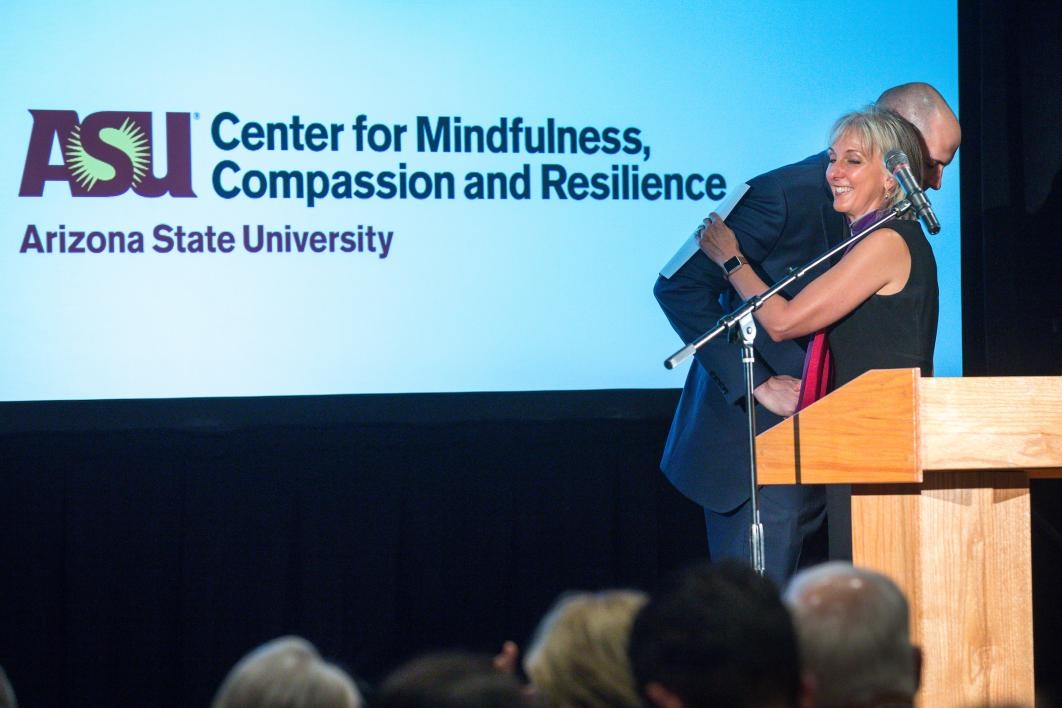Standing at the front of a large lecture hall as hundreds of college students streamed in with their books, bags and devices, headphones still in their ears, something dawned on William Heywood. They were distracted from the moment they came in the room.
Heywood, assistant director of The Design School at ASU, began starting each class with five minutes of what he called “centering.” Five quiet minutes where students were asked to unplug, breathe deeply and be present in the moment.
After doing this for a while, Heywood said he noticed class engagement and performance improved. He called it centering, but many may know it as mindfulness.
Over the past decade, it has become a buzzword with the rise in popularity of such practices as yoga, tai chi and meditation. The New York Times regularly reports on it, it’s being taught to kids as young as preschool and the U.S. Army has adapted it into its training.
But what is mindfulness, and why is it becoming the zeitgeist of the 2010s?
“Mindfulness is a skill set, and it means the ability to pay attention, with intention, to the present moment,” said Teri PipePipe is also dean of ASU's College of Nursing and Health Innovation and a research professor., ASU's chief well-being officer. “We are living in a society that is characterized by uncertainty, and there are lots of pulls and tugs to our attention and … multiple stimuli coming at us from multiple channels.
“Learning this skill set, learning to pay intentional attention to whatever is in front of us in the present moment will help all of us cope much better as a society.”
On Wednesday evening, Pipe welcomed deans, faculty, students and community members — about 175 in all — to the grand opening of ASU’s Center for Mindfulness, Compassion and Resilience.
The event took place at the Desert Botanical Garden in Phoenix and featured demonstrations of various mindfulness practices, including yoga, tai chi/qigong, Tibetan singing bowls and interactive art.
Video by Ken Fagan/ASU Now
Surrounded by the natural desert landscape, ASU Research Professor Linda Larkey stood calmly with her eyes closed as she slowly raised and then lowered her arms. A small breeze fluttered the leaves on the tree behind her and glasses clinked in the background, but she was unfazed as she began turning rhythmically from side to side.
Larkey is a practitioner of qigong, similar to yoga in its focus on posture and coordinated, fluid movements. She studies how such mind-body methods can alleviate symptoms in cancer survivors. Along with the calming effects of mindfulness, Larkey said, “there’s a whole cascade of changes in the body’s ability to make its own medicine.”
The center will bring together researchers like Larkey, as well as practitioners and educators across disciplines at ASU to collaborate, study and spread ideas about mindfulness, compassion and resilience throughout the university and surrounding community.
Six years ago when Pipe came to ASU from the Mayo Clinic, she discovered a number of university faculty already immersed in the mindfulness field. She felt a sense of personal responsibility to connect them, and did so with a potluck at her house. The guest list grew from 20 to more than 100, and Pipe decided it was time to formalize things. She put together a proposal for the center last summer, and now it’s a reality.
“The president, the provost, other deans, all university leadership have been phenomenally supportive,” Pipe said. “ASU has this reservoir of expertise and motivation and desire to use mindfulness as scientists and educators. … So [this center is] connecting people around these concepts, and then just amplifying the work.”
Members of the community have also been supportive of the initiative.
Last year, Mike and Cindy Watts made a $1 million commitment to help launch the center. Their generous donation contributed to Campaign ASU 2020, a campus-wide effort to raise at least $1.5 billion.
Pipe has a grand vision for the center, one that will ingrain the ideas of mindfulness, compassion and resilience into the culture of the university, in the same way that sustainability and innovation are.
“So much so,” she said, “that it’s just part of the fabric of ASU.”
Top photo: ASU Research Professor Linda Larkey, a practitioner of qigong, leads a group through the moves at the grand opening of ASU's Center for Mindfulness, Compassion and Resilience at the Desert Botanical Garden Wednesday evening. The new center was inspired by Teri Pipe, dean of the College of Nursing and Health Innovation and the university's chief well-being officer, and began as group meetings with 20 people at her home. Photo by Charlie Leight/ASU Now
More Health and medicine

ASU offers bilingual counseling to Spanish speakers
Arizona is one of the five states in the nation with the highest percentage of Hispanic residents, according to the U.S. Department of Health and Human Services Office of Minority Health, and …

College of Health Solutions launches first-of-its-kind diagnostics industry partnership to train the workforce of tomorrow
From 2007 to 2022, cytotechnology certification examinees diminished from 246 to 109 per year. With only 19 programs in the United States, the cytology workforce that stands at the front line of…

ASU's Roybal Center aims to give older adults experiencing cognitive decline more independence
For older people living alone and suffering from cognitive decline, life can be an unsettling and sometimes scary experience.Arizona State University is out to improve that experience.Two projects…


